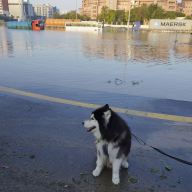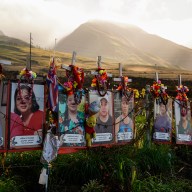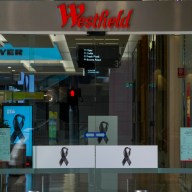SAN DIEGO – One of its ex-pilots says the entire history of the USS Midway aircraft carrier is summed up in six words: “We zap ’em and trap ’em.”
The Midway — America’s 41st fighting, floating airport — zapped fighter jets off its steam catapults and trapped ’em with its tailhooks for 47 years before it was mothballed, retired to a pier in San Diego Bay and transformed into one of the world’s great museums.
Standing on Midway’s windswept flight deck in the morning sun, with the city skyline to the east and the USS Ronald Reagan carrier chugging out to sea to the west, the pilot-turned-tour-guide ties into a knot of tourists.
Imagine, he says, trying to land a fighter jet on a pitching patch of floating steel the size of a tennis court.
The adventure would start, he says, with jets roaring past the control tower, barely above the water on the ship’s starboard (right) side, on the first leg of the counter-clockwise landing cycle.
“The (planes) are screaming,” he says. “They’re still doing upwards of 400 knots (740 km/h) as they come down the side of the ship, so it’s pretty spectacular.”
The pilot would yank the plane into a high, steep, 180-degree, head-snapping turn across the bow, losing speed in the process. The flaps go down, landing gear down, speed brakes on.
The pilot banks left again for the final approach on a 3.5-degree glide slope, and calls the tower: “Sidewinder. 101. Phantom. Ball. Four-point-two.”
Sidewinder is the pilot’s call-sign, Phantom the plane, 101 the number on the tail.
Ball means the pilot has “called the ball,” catching sight of the circular light-signal “meatball” on the side of the ship that monitors whether the pilot is coming in too high or too low. Four-point-two means the jet has 4,200 pounds of fuel left.
Down the jet comes, pilot’s eyes on the “meatball,” maintaining the angle of attack of wings against the wind until the plane whump-slams onto the deck, its dangling tailhook catching one of three arresting wires which wrenches the craft from 240 km/h to a standstill in just over a second.
Then it’s time to quickly clear out, with the next jet just 45 seconds behind.
The USS Midway, walking distance from downtown San Diego, is a floating city of 4,500 that took to the seas shortly after the Second World War and served around the world until decommissioned in 1992.
It was active in the Vietnam conflict and in 1975 took in planes ferrying U.S. citizens and refugees fleeing South Vietnam, ahead of its North Vietnamese occupiers. In 1990, fighters flew off its deck in Operation Desert Storm against Sadam Hussein’s troops in Kuwait.
By 2004, the carrier was 12 years into retirement when it opened its doors as a tourist attraction.
Today, visitors head up the gangway, put on headphones and walk the decks on a personal, self-directed audio tour.
On the flight deck and in the hangar there are 25 restored aircraft: a Huey helicopter gunship, an F-4 Phantom, an F-18 Hornet.
Those who walk to the bow can examine the steam-assisted catapults that zapped the planes into the air. Put the family car on the catapult, says the audio narrator, and it would launch it almost a kilometre out to sea.
Former Midway sailors and airmen are on hand to answer questions, tell stories and escort groups of tourists up the narrow stairs to the control tower and the bridge.
Down below, there’s the engine room, crew quarters, chapel, brig, sick bay, machine shop, chow line, kitchens, laundry room and much more. Some rooms have mannequins to help visitors visualize daily life aboard ship.
In the massive hanger, there are flight simulators for the young and young at heart. There’s a gift shop and the Fantail Café, where diners can get food that is a bit pricey ($9 for a cold sandwich), or just have a lemonade and rub tired feet.
Those with even casual interest will need a few hours to take it all in. Major military buffs will need a day. It’s not cheap but not unreasonable: $18 for adults and $10 for kids.
Pack sunscreen and a good pair of running shoes. High heels and flip-flops are killers on narrow metal stairs. Toddlers and young ones can come but strollers quickly bog down in the welter of tiny hallways and rooms.
The best bet is to go early and zip up to the flight deck to take a tour of the bridge and control tower before it gets busy.
If time is really tight, just tour the flight deck, see the jets and enjoy the views of the city, the bay and the sweeping, peaking Coronado Bridge.
The USS Midway can be whatever you want. Just call the ball.
———
If you go . . .
For more information on the Midway:www.midway.org
For more information on San Diego:www.sandiego.org
















